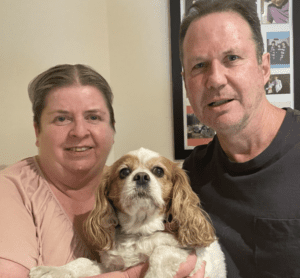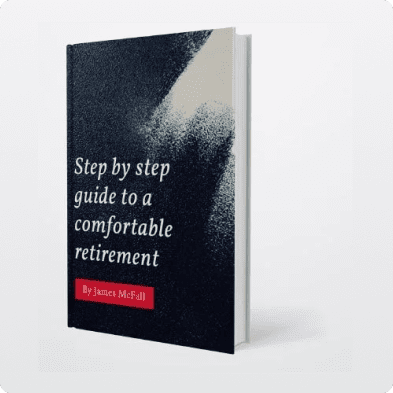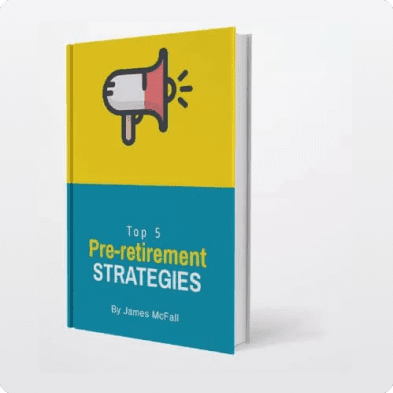A Yield Client Case Study 
Project Ava could retire at 49 or 53 after upgrading home

Significantly lower risk as a result of our strategy, with very similar projected asset position

Significantly lower debt levels as a result of our advice

Maximising super contributions, including concessional catch-up rule

Project Ava could retire at 49 or 53 after upgrading home

Significantly lower risk as a result of our strategy, with very similar projected asset position

Significantly lower debt levels as a result of our advice

Maximising super contributions, including concessional catch-up rule
Oliver and Ava are a High Net Worth (HNW) couple from Melbourne’s North-East who came to us looking to better understand how they are tracking towards retirement, and whether their plans of upsizing their family home in the future is viable.
They also wanted clarity around their Self-Managed Super Fund (SMSF) and Life Insurance, in order to ensure that their fund and cover are still adequate for their goals.
Ava currently works as a Management Consulting Partner for a global company, and Oliver is self-employed. They are both in their 40s, with investments in property and equity/stocks in the company Ava works for. They have 5 years age difference, which was a planning opportunity we helped them work with too.
Introduction
Oliver and Ava have their primary residence in Eaglemont, and investment properties in Torquay, Shoreham, and Port Fairy. They expressed their interest in upsizing their primary residence in 5 years, and wanted to know whether this would have an effect on their ability to retire at their anticipated ages of 50 and 60 respectively.
They also wanted to have their SMSF reviewed to ensure the appropriateness of the fund and the underlying investments within; Ava specifically felt as if she lacked clarity surrounding her SMSF.
Ava has full insurance provided through her employer; however, Oliver is uninsured as the couple felt they were being overcharged with his previous cover.
We prepared detailed financial projections based on the couple’s current financial position. These act as a baseline to contrast against the actions and strategies we recommended in order to evaluate how upsizing their home and their decision to change Oliver’s insurance cover could impact their long-term financial position and ability to retire.
Overview
Through our analysis, it was made clear that due to Ava’s high earning capacity, the couple should have no issue affording their desired retirement lifestyle. We advised the couple to take advantage of concessional contributions and the catch-up rule, in order to save on tax.
Under our recommended strategy of maximising concessional contributions and re-distributing funds to Oliver with non-concessional contributions, it would appear that Ava could be in a position to retire by age 49, a year earlier than desired. However, as Ava and Oliver mentioned they wanted to upsize their primary residence, we projected that if they were to do so, it would push Ava’s ability to retire back 4 years.
Ava also holds stock in the company she is employed at, which we recommended they should sell a portion of as they vest. The surplus funds from the sales should ensure they continue to meet their tax debt, whilst also allowing them to diversify funds into Superannuation and reduce their net debt position.
We also reviewed the couple’s insurance coverage and undertook a needs analysis, where we identified that Ava has a need for cover, whereas Oliver does not. Our findings identified that Oliver’s ability to work is not pivotal to being able to afford their retirement lifestyle, whereas Ava has a need for cover as her ability to generate an income is crucial to the couple’s ability to retire.
Outcomes
For Ava and Oliver, one of the most significant advantages of our advice was how we helped them balance their allocations to debt reduction, super contributions, and ongoing investment into the company Ava works for.
The couple already held a highly concentrated exposure to Ava’s company stock and options and property and this was projected to grow exponentially. We identified that while this could be an excellent investment, it exposes them to significant ‘concentration risk’.
Our advice saw them retain a considerable exposure to the company and all of their investment properties, while using the couple’s age difference to their advantage, by contributing non-concessionally into Oliver’s super. Not only does this diversify their investment holdings, it diverts their funds to the highly tax-effective environment of super and because it is invested in Oliver’s name, it will be tax-free and accessible to them sooner than it would be to Ava.
Through our recommended strategy of maximising concessional contributions via salary sacrifice, we projected that could result in an estimated tax saving of $688 per annum which instead would be put into Super to further grow their nest egg.
We also suggested Ava take advantage of what’s known as the “catch-up” concessional contribution rule. This allows her to contribute a further $11,772 to Super concessionally in the financial year ending 2022. By implementing this strategy, the couple could save an additional $2,001.20 in tax that is instead diverted towards Super where the funds can be invested tax effectively.
As the couple mentioned they lacked clarity around their Self-Managed Super Fund, we recommended that they sell their SMSF’s current direct shareholding, which they were not confident was being proactively managed and invest in a more diversified portfolio of ETF’s, managed funds (including bespoke direct investments) & M-funds.
We also advised that they utilise Accounting and Adviser Services (AAS) as the administrator of their SMSF. The aim of this recommendation is to reduce the administrative burden of operating an SMSF yourself and effectively allows Yield Financial Advisors to implement the recommended investment strategy.
Based on our projections, after Ava and Oliver upgrade their home and implement our strategies, they will have a net financial position that is in line with their current strategy of continuing to accumulate direct shares.
What makes our strategy compelling, is that we have accounted for the tax implications of the various sales of accumulated company shares, that are recommended along the way (compared to current where there is a substantial unrealised capital gain) and the investment return assumptions we have used on money in super, are lower than the accumulating company shares, meaning they get a very similar projected outcome with lower risk and a better net (after-tax) return.
In addition to this, their net debt levels would be substantially lower in 10 years with our strategy than current, further reducing the comparable risk.


























